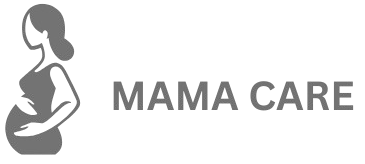An honest, comforting guide to the physical and emotional changes after birth ( Postpartum Body Changes )
Bringing a baby into the world is an incredible feat—but what happens to your body afterward isn’t talked about enough. Beyond the joy and exhaustion of new motherhood, there are postpartum body changes that can feel confusing, surprising, and even isolating.
Let’s break the silence. Here’s what’s normal, what’s temporary, and what deserves more attention.
1. Your Belly Won’t Go Back Immediately
After birth, your belly may still look a bit pregnant—and that’s completely normal. It takes time for your uterus to shrink and your abdominal muscles to recover. Most moms experience a gradual change over several weeks to months.
Tip: Gentle core-strengthening and pelvic floor exercises can help—but always get clearance from your doctor first.
2. Vaginal Bleeding (Lochia) Lasts Weeks
Whether you had a vaginal birth or C-section, lochia (postpartum bleeding) can last up to 6 weeks. It starts off red and heavy, then becomes lighter and brownish or yellow as it tapers off.
Tip: Stock up on large, comfortable pads and avoid tampons until your doctor gives the go-ahead.
3. Night Sweats and Hormonal Swings
Your hormones shift dramatically after birth, which can trigger night sweats, mood swings, and sudden emotional moments (cue the “baby blues”). These changes are real—and tough.
Tip: Stay hydrated, wear breathable clothes, and talk to someone if you feel overwhelmed for more than two weeks.
4. Brain Fog and “Momnesia”
Forgetfulness and mental fog are common, especially with sleep deprivation. It’s not just in your head—hormones, stress, and fatigue all play a role.
Tip: Keep notes, ask for help, and rest whenever possible. Your clarity will return.
5. Hair Loss and Skin Changes
Many moms experience hair shedding around 3–4 months postpartum due to dropping estrogen levels. Skin may also change—acne, dryness, or dark spots (melasma) can appear or persist.
Tip: Use gentle hair and skin care, and remember—this phase is temporary.
6. Changes “Down There”
Tearing, stitches, or general soreness are very common. Even if you had a C-section, pelvic floor pressure or discomfort can linger.
Tip: Sitz baths, perineal sprays, and pelvic floor therapy can help with healing and comfort.
7. Emotional Adjustment Is Real
Beyond physical changes, many moms feel disconnected from their bodies or overwhelmed by their new identity. This is valid. You just did something life-changing.
Tip: Be kind to yourself. Talk openly with your partner, join a mom group, or speak to a professional if needed.
Final Thoughts Postpartum Body Changes
Your postpartum body is not broken—it’s healing.
Your emotions are not weakness—they’re human.
You’re not alone—you’re adapting to a new and powerful version of yourself.
By sharing these truths, we help every mom feel seen, supported, and stronger.

